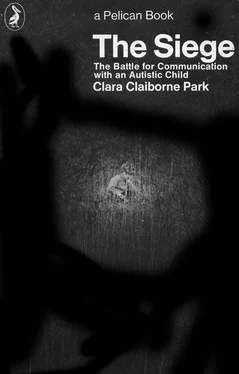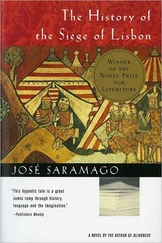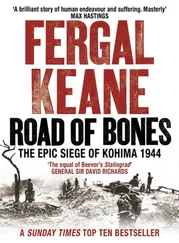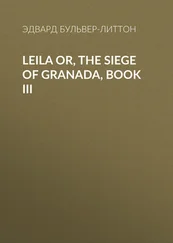As she grew, Elly could appreciate larger orders of time. At seven and a half, she produced a series of four nearly identical paintings; a little girl and her mother outside a house, the only variation in the pictures the colour of the simple landscape which surrounded them. Pale green, green, orange, white. ‘Spring, Summer, Autumn, Winter!’ she told me — just like the seasonal pictures we had looked at together in her educational children’s books. As she neared eight she became interested in ages, her own and other people’s, in past and future as well as present. Number could order time and was a significant aspect of people as well. ‘You [read, of course, “I”] eight.’ ‘Becky fifteen.’ ‘Mama forty-two.’ With satisfaction she anticipated birthdays, making the necessary adjustments: ‘Ha’ birthday Mama forty-three!’ Events were located in a future ordered by number: ‘You fourteen see Rosemary!’ (For Rosemary, the last of our mother’s-helpers, had returned to England as Elly turned seven and none of us could contemplate not seeing her again. Elly had invented ‘fourteen’; we shall try to make her prediction come true. ) Elly’s numbers ordered a future in which, to our delight, she grew steadily bigger and more adequate. [27] She was helped in this by her pleasure in two books that I name because other parents may be able to use them: Phyllis Krasilovsky’s The Very Little Girl and The Very Little Boy (Doubleday, 1960, 1962). In these, a story so simple that even Elly can follow it traces by pictures the growth of a tiny child towards strength and adequacy. I would also urge all parents of defective children, especially those who do not draw, to photograph often the houses and people that constitute their child’s past.
Levelling her hand two inches above her head to show her future height: ‘You nine like that see mirror better!’ ‘You ten like that!’ ‘You nine.’sixty-seven,’ she said one day in 1966 — when, of course, she was eight. ‘You twenty, glug down big pill!’ The past, too, took on numerical reality. As we looked at the family photographs we had enjoyed for years, ‘See Sara baby?’ was replaced by ‘See Sara one?’ But her keenest interest was of course in herself. She still asks me to re-create her past, but now it is exhaustively catalogued by number: ‘Draw Elly zero?’ ‘Draw Elly one?’ ‘Draw Elly two?’. and number by number, picture by picture, the tiny baby crawls, walks, grows, and reaches the present.
Space, of course, she had organized far earlier than time. I cannot know by what methods the two-year-old Elly had recorded her indelible map of houses and streets, but she had done so. Nevertheless it was five years before it occurred to us to show her a real map, and even when it did we tried it almost as a joke, it seemed such a quixotic thing to do. But continuing the old methods of dealing visually with experience we could not talk about, when we bought a summer house in Rhode Island and moved there, leaving once more home behind, we thought we might reinforce Elly’s sense of security by showing her the road map of our trip south. It was an instant success. Our town, the turnpike, the pancake house where we stopped for lunch, the ferry, and our island resting place were located with delight, over and over again. In a few weeks we shifted to the big atlas and retraced the European trip now three years in the past, as my hand turned aeroplane and flew to England. Vroom-vroom: we drove to Southend, flew the Channel, entrained (chug-chug) for Munich, reached St Gilgen, returned via Le Havre. Each new understanding, however formal, can be used to render experience more manageable. Now absences could be talked about: I could say that Rosemary was in England, that Jill was in Pennsylvania (space) and would come back to see us at Christmas (time). The elaborate projection-map of our college town produced tense, excited delight. I had had to guide her across oceans, but she herself could trace her familiar walks and reach the beautifully rendered library, the church, Daddy’s lab. She became fascinated with road signs; I remember a long night drive with everyone torpid but Elly, who was crowing ‘Two! Seven! Curved arrow! Arrow straight !’ When she returned to her town map she was ready to discover ‘Route 2 west !’
Six months later we were back in our summer house. Elly was not quite eight. We had arrived the day before and everyone was busy settling in while Elly played unnoticed with last year’s happily rediscovered crayons. I did not look at the sheets she had produced until next day. The marks on them were quite different from any she had ever made before — superficially less orderly than her usual pictures, they consisted of long, sinuous triple parallels interspersed with occasional squares and rectangles. Snakes? The word brought no response.
Suddenly I saw. Two borders, a line down the middle. Roads! ‘Did you make a road, Elly?’ ‘Yes!’ And now I under-stood: here was a square for our house, a road leading out, with no line down the middle, however, but filled in with rough pencilling. ‘ Dirt road!’ said Elly. I followed it as it made the left turn and joined the main road where the white line began. I followed her map all the way to town. ‘Hardware store!’‘Market!’‘Ferry!’ The important buildings were there, the major turns correct. It wasn’t perfect; Elly had put the hardware store on the wrong side of the street. But there are normal children older than she who do not grasp the concept of a map at all.
A map is one of the most demanding of the possible orders of space. Controlled by the reality to which it corresponds, it fails to the degree it is spontaneous or free. If Elly drew a map (and she has drawn only two), or drew the seasons (she has drawn them only once) she was not composing freely; she was reproducing an order in the external world. But her painting and drawing was no less orderly when it was not bound by fidelity to an external original — rather it was more so.
It happens that all of Elly’s drawings I have mentioned so far have been representational. They have been easy to call to mind, for the very reason that they were so untypical of her usual work. There were six or eight of them, perhaps, over a period that produced hundreds of nonrepresentational pictures. Only in the past year and a half, in fact, have renditions of external reality — people and things — become at all common. Before that it was almost all ‘nonobjective painting’. From the time she first began to draw and paint without reluctance [28] She began to paint in the English nursery school, at four and three-quarters, and painted daily in her American one. She also painted intermittently at home.
— roughly age five-her work exhibited the same characteristics of order and control that we observed elsewhere.
Its most obvious characteristic was its neatness. Though she had never before painted on an easel, she rapidly mastered the problem of paint that drips or runs. She showed no particular anxiety; painting did not seem to engage her emotions. She simply learned to take on her brush the right amount to produce a clear, pure, easily controlled line. Colours were neatly placed contiguous to each other, never superimposed. Most nursery schools have learned to make their work easier by limiting the number of colours to three, changed daily; Elly was more than content to use only those that were set out. Though she knew how two colours combine to produce a third, she herself never mixed colours on the paper. She never splashed or scrubbed the paper, never added red to green to blue to produce a glorious mud. Her brushes were the cleanest in the class. Not that she was painfully neat; she worked too quickly and casually for that. Rapidly but judiciously she made lines and figures which organized the full space at her disposal. Balance came easy to her. [29] When her paintings were unbalanced, they were unbalanced in an orderly way — for example, three shapes at the bottom of her paper, every day for a week.
Usually she painted in lines against the white background of the paper, not filling in the total space with colour, but when at length, encouraged by her teachers, she made areas of colour to cover the whole paper, her colours exhibited the same purity, the same clarity of edge. I have sheaves of her paintings. Covering a three-year period, they show no technical progress; I do not think anyone could date them unassisted. All but a very few are nonrepresentational. There are lines, parallel, wavy, or straight; zigzags, stripes, circles, squares, rectangles, triangles, in different sizes and assorted combinations. She would introduce a motif, repeat it daily with small variations for a week or two, then abandon it entirely — in sharp contrast to her representational drawings, which were always one-shot affairs, coming seemingly out of nowhere at intervals months apart.
Читать дальше












